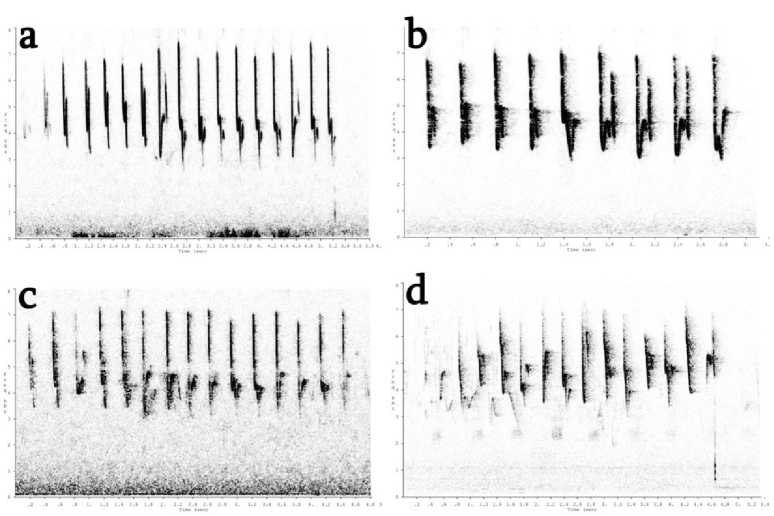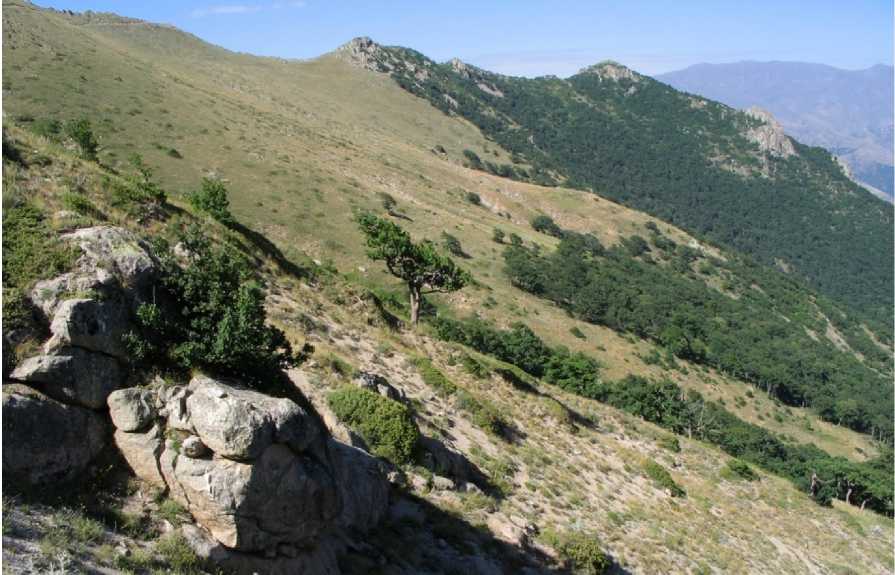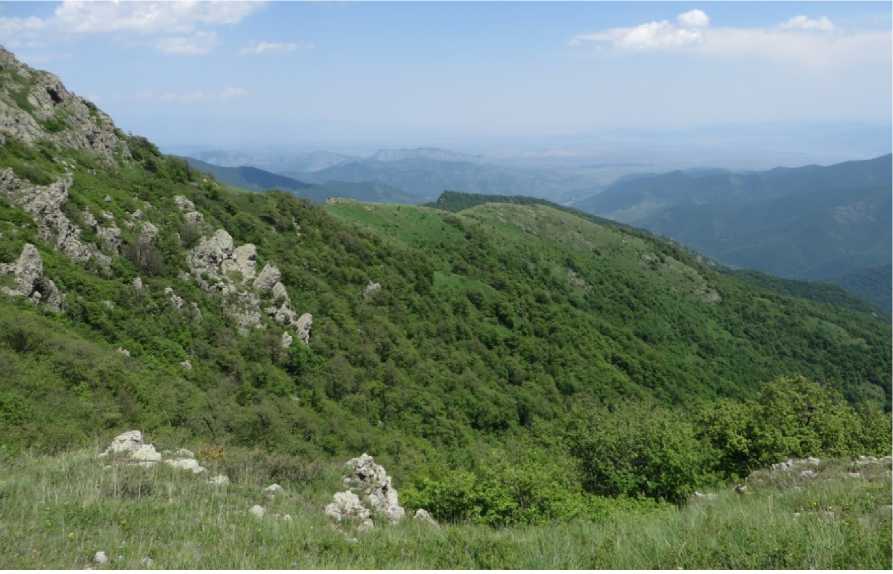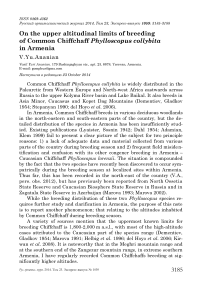On the upper altitudinal limits of breeding of common chiffchaff Phylloscopus collybita in Armenia
Автор: Ananian Vasil Yuri
Журнал: Русский орнитологический журнал @ornis
Статья в выпуске: 1059 т.23, 2014 года.
Бесплатный доступ
Короткий адрес: https://sciup.org/140154271
IDR: 140154271
Текст статьи On the upper altitudinal limits of breeding of common chiffchaff Phylloscopus collybita in Armenia
Поступила в редакцию 23 October 2014
Common Chiffchaff Phylloscopus collybita is widely distributed in the Palearctic from Western Europe and North-west Africa eastwards across Russia to the upper Kolyma River basin and Lake Baikal. It also breeds in Asia Minor, Caucasus and Kopet Dag Mountains (Dementiev, Gladkov 1954; Stepanyan 1990; del Hoyo et al . 2006).
In Armenia, Common Chiffchaff breeds in various deciduous woodlands in the north-eastern and south-eastern parts of the country, but the detailed distribution of the species in Armenia has been insufficiently studied. Existing publications (Lyaister, Sosnin 1942; Dahl 1954; Adamian, Klem 1999) fail to present a clear picture of the subject for two principle reasons: 1) a lack of adequate data and material collected from various parts of the country during breeding season and 2) frequent field misidentification and confusion with its other congener breeding in Armenia – Caucasian Chiffchaff Phylloscopus lorenzii . The situation is compounded by the fact that the two species have recently been discovered to occur sym-patrically during the breeding season at localized sites within Armenia. Thus far, this has been recorded in the north-east of the country (V.A., pers. obs. 2012), but has previously been reported from North Ossetia State Reserve and Caucasian Biosphere State Reserve in Russia and in Zagatala State Reserve in Azerbaijan (Marova 1993; Marova 2002).
While the breeding distribution of these two Phylloscopus species requires further study and clarification in Armenia, the purpose of this note is to report another phenomenon; that relating to the altitudes inhabited by Common Chiffchaff during breeding season.
A variety of sources mention that the uppermost known limits for breeding Chiffchaff is 1,800-2,000 m a.s.l., with most of the high-altitude cases attributed to the Caucasian part of the species range (Dementiev, Gladkov 1954; Marova 1991; Helbig et al . 1996; del Hoyo et al . 2006; Kirwan et al . 2008). It is noteworthy that in the Meghri mountain range and at the southern end of the Zangezur mountain range, in extreme southern Armenia, I have regularly recorded Common Chiffchaffs breeding at significantly higher altitudes.
Fig. 1. A breeding male Common Chiffchaff Phylloscopus collybita trapped at 2,253 m a.s.l., Meghri Mountain Range, Armenia. 27 May 2014. © Vasil Yu. Ananian.

Fig. 2. Sonograms of song strophes of three males of Phylloscopus collybita (a, b, c) and a male Phylloscopus lorenzii (d, for comparison). a, b, c - Meghri Mountain Range, Armenia. 27 May 2014; d – Halab Mountain Range, Armenia. 21 June 2013. © Vasil Yu. Ananian.
At Boghakar State Sanctuary, in the Zangezur mountains, territorial singing birds were recorded on 10-12 July 2006 near our camp site at 2,413 m a.s.l. At the Tashtun Pass, in the Meghri mountains, singing birds are clearly audible from the main road from as high as 2,500 m a.s.l. In different years I have recorded singing birds at several sites on both the north-eastern and south-western slopes within this mountain range at elevations above 2000 m a.s.l. In May 2014, several male Common Chiff-chaffs were photographed and sound recorded at various sites within these areas between 2,125 – 2,482 m a.s.l. (Figs. 1, 2).

Fig. 3. Fragment of Common Chiffchaff Phylloscopus collybita habitats at the upper timberline of Zangezur Mountain Range, Boghakar State Sanctuary, Armenia. 11 July 2006. © Vasil Yu. Ananian.

Fig. 4. Fragment of Common Chiffchaff Phylloscopus collybita habitats at the upper timberline of Meghri Mountain Range, Armenia. 27 May 2014. © Vasil Yu. Ananian.
In the above-mentioned areas Common Chiffchaff is common throughout the middle and upper forest belts up to the timberline. This is not particularly surprising, as the more arid climate in this part of the Araks River valley, results in the upper timberline being situated notably higher than elsewhere in Armenia, and in some places reaches 2,600 m a.s.l. and even higher. The upper belt of deciduous woodlands here is dominated by oak (Quercus iberica, Q. macranthera), hornbeam Carpinus betulus, maple Acer sp. and various shrubs (Maghakyan 1941) (Figs. 3, 4).
It should be noted, that in the areas discussed (and south of Bargushat mountain range in general) the Caucasian Chiffchaff is not found during breeding season (V.A., pers. obs. 1999-2014), although its occurrence north of the Meghri mountain range cannot be fully eliminated. Therefore, a published count of 10 birds on 10 May 1972 near Meghri town, in the southern foothills of the latter range (Adamian, Klem 1999) is clearly an error.
I would like to thank the following individuals: Andreas Schoellhorn and Claudia Müller were my coobservers in May 2014, José Luis Copete, Nigel Redman and Irina M. Marova have provided some references, Chris G. Bradshaw has reviewed and improved draft of this note.


